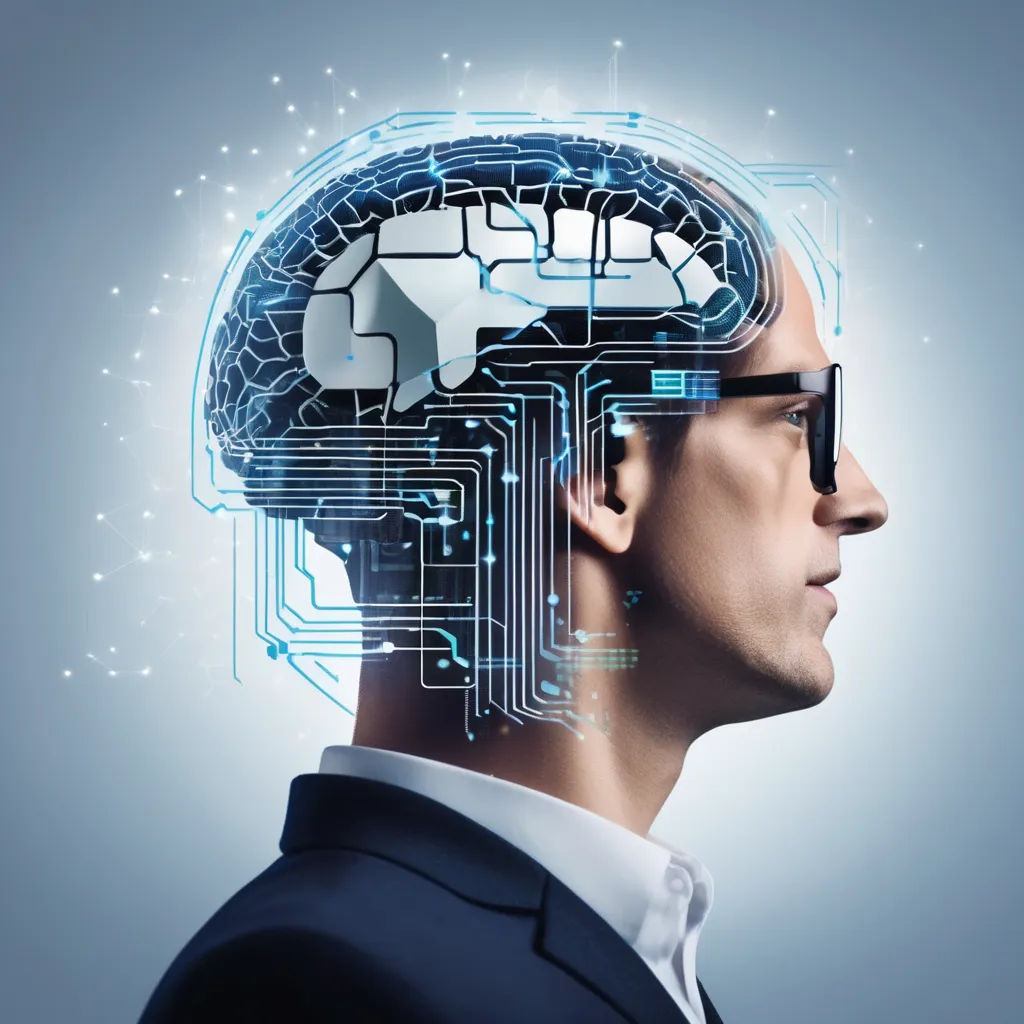Consider the astonishing power of the human mind: we are surrounded by technology that allows us to control devices simply by thinking. This brings to question the limits of these capabilities. Can our thoughts and eye movements really be harnessed to the point where we could, for instance, fry a sausage?
The concept of using mind and eye waves for practical applications has been explored extensively in neuroscience and bioengineering. However, frying a sausage with these waves is still far from reality. No documented case exists where someone has successfully used their mental focus to cook food, highlighting the current technological limitations in translating cerebral energy into culinary heat.

Is it Possible to Fry Sausages with Mind and Eye Waves?
Imagine using only your mind and eyes to cook breakfast. The idea sounds like it hails from a science fiction movie, but it’s worth a closer look. Scientists have made significant progress in understanding how brain waves and eye movements can control devices. Technology that reads these signals can already turn on lights or move a wheelchair. Could it ever go as far as cooking sausages?
The basics of this technology involve brain-computer interfaces (BCIs). BCIs translate brain signals into commands for electronic devices. These interfaces have primarily been used for assisting people with disabilities. They can, for instance, control cursors on computer screens. However, generating enough energy to cook food remains a significant challenge.
Using mind and eye waves to fry sausages would require converting mental energy into heat. Current technology doesn’t support this level of energy conversion. Most BCIs rely on electrical outlets for power. Even if mind waves could control heating equipment, the energy required to cook would be far greater. This makes frying sausages with just mental focus a complex task.
Several experiments have hinted at future possibilities. Researchers have used BCIs to control robots and even small drones. But no one has successfully used these interfaces to cook food. The science is fascinating and evolving, with new advancements every year. Perhaps one day, mind-controlled cooking might be more than just a futuristic dream.
The Science of Mind and Eye Waves
The human brain generates electrical signals that we call brain waves. These waves are produced by the neurons communicating with each other. Scientists use equipment like electroencephalograms (EEGs) to measure these signals. The data gathered helps researchers understand how our brains work. This knowledge can be applied to various technologies, including brain-computer interfaces.
Eye waves or movements are tracked using special cameras and sensors. Our eyes move in unique ways when we look at different things or focus on tasks. By studying these patterns, scientists can create systems that respond to eye movements. One common example is eye-tracking technology used in virtual reality headsets. This tech offers a hands-free way to interact with digital environments.
Combining brain and eye wave data allows for even more sophisticated control systems. For example, people can now type on virtual keyboards just by thinking and looking at letters. These advancements have profound implications for individuals with limited mobility. Using mind and eye waves can improve their quality of life significantly. However, much research is still needed to unlock the full potential.
Key areas of research include understanding different types of brain waves, such as alpha, beta, and gamma waves. Each type is linked to specific activities or states of mind. For instance, alpha waves are often associated with relaxation, while beta waves relate to active thinking. By tapping into these unique waves, scientists hope to develop new applications. The future of mind and eye wave technology looks promising and opens up exciting possibilities.
The Technological Applications of Bioelectric Signals
Bioelectric signals, such as brain waves and heartbeats, have a wide range of applications. In medicine, these signals help monitor patients’ health. Electrocardiograms (ECGs) use heartbeats to check for heart conditions. EEGs track brain waves to diagnose neurological disorders. These technologies provide critical data that doctors use to make informed decisions.
Outside of healthcare, bioelectric signals have innovative uses in various fields. In gaming, brainwave headsets allow players to control characters with their thoughts. This makes for a more immersive experience. Similarly, in smart homes, devices can be controlled through brain-computer interfaces. Imagine adjusting your thermostat with just a thought.
Wearable technology also leverages bioelectric signals. Fitness trackers measure heart rates to monitor exercise intensity. These devices provide real-time feedback to help users optimize their workouts. Some advanced models even include brainwave sensors.
Another fascinating application involves prosthetics. Bioelectric sensors can control robotic limbs, enabling more natural movement. By picking up electrical signals from the user’s muscles, prosthetics can perform complex actions. This tech has transformed the lives of many individuals, providing them with enhanced mobility.
The Limits of Human Mind and Eye Waves
While the human mind is powerful, it’s not without its limits. Brain waves can control some devices, but the technology is far from perfect. The signals are often weak and can be disrupted by external factors. This makes consistent and reliable control challenging. Our understanding of these signals is still evolving.
Another limitation is the energy required for more complex tasks. Frying sausages, for example, requires a significant amount of heat. Current brainwave technology can’t generate this kind of energy. Most applications focus on low-energy tasks, like moving a cursor or selecting options on a screen. These are useful but far from cooking a meal.
The complexity of the human brain adds another layer of difficulty. Different types of brain waves correspond to different mental states. This makes it hard to isolate specific signals for precise control. Even slight changes in focus or emotion can alter the brainwaves. This adds a level of unpredictability to the technology.
Eye waves, or eye movements, also come with limitations. Tracking eye movements requires specialized equipment. These systems are sensitive and can be affected by lighting conditions and user position. Eye-tracking technology works well for certain applications but is not foolproof. It’s another example of how bioelectric signals are powerful but not always reliable.
Maintenance and calibration are ongoing challenges. Devices that read brain and eye waves need regular adjustments to stay accurate. This can be time-consuming and requires a certain level of expertise. It limits the widespread adoption of these technologies. Advances are being made, but there is still a long way to go.
Despite these limitations, the potential is enormous. Continued research and innovation are likely to overcome many of these hurdles. Scientists are developing better algorithms and more sensitive equipment. The future may hold incredible advancements, but right now, the technology has clear boundaries. Understanding these limits helps set realistic expectations.
Notable Experiments Involving Mind and Eye Waves
Several experiments have explored the control of devices using mind and eye waves. One famous experiment involved a paralyzed man who managed to control a robotic arm with his thoughts. Using a brain-computer interface, he was able to perform simple tasks like picking up objects. This experiment showed the potential of brainwave technology for restoring mobility. The results were promising but required significant technological support.
Another notable study in eye-tracking involved controlling computer games. Researchers used eye movements to navigate through virtual environments. Players could shoot targets or solve puzzles by simply looking at specific points on the screen. The success of these experiments opened new avenues for gaming and accessibility. It demonstrated how eye waves could offer a hands-free gaming experience.
A different experiment focused on mind-controlled drones. Participants wore EEG headsets to pilot small drones through obstacle courses. The drones responded to the mental commands of the participants. This experiment was exciting for its practical applications. It provided a glimpse into potential uses in search and rescue missions.
Some researchers have also experimented with mind-controlled keyboards. Users could type by focusing on letters displayed on a screen. This was achieved by measuring the brain’s electrical activity. Although it was slow compared to traditional typing, it offered a new method for individuals with severe disabilities. This type of technology opens up new communication possibilities.
Scientists have also investigated the use of bioelectric signals in art. One project allowed artists to create digital paintings using their brainwaves. The colors and brushstrokes changed based on their mental state. This unique application showed the creative potential of mind waves. It highlighted the intersection between technology and human creativity.
More recently, experiments have started exploring the combination of mind and eye wave technology. By using both sets of signals, researchers aim to create more precise and responsive systems. These integrated approaches could potentially overcome some of the limitations of using one signal type alone. The future looks bright for continued innovation in this exciting field.
Future Possibilities: Expanding the Potential of Mind and Eye Waves
The future holds exciting prospects for mind and eye wave technology. One potential area is in education. Imagine students being able to interact with digital classrooms using only their thoughts and eye movements. This could revolutionize how learning materials are accessed and interacted with. It would provide a more immersive and engaging educational experience.
Healthcare stands to benefit significantly from advances in this technology. Brain-controlled devices could assist in physical therapy. Patients could use their thoughts to control robotic limbs for various exercises. Eye-tracking technology could monitor patients’ health conditions more effectively. These improvements would lead to better treatment outcomes and enhanced patient care.
In the field of entertainment, mind and eye waves could change the way we interact with media. Virtual reality experiences could become more immersive by incorporating brain and eye signals. Users would not need controllers anymore. They could navigate virtual worlds and interact with characters using just their thoughts. This would create a more fluid and intuitive experience.
Communication is another area ripe for innovation. Mind-controlled keyboards and communication devices could become faster and more efficient. This would be particularly beneficial for individuals with severe disabilities. They would have new ways to express themselves and engage with others. Enhanced communication tools could greatly improve their quality of life.
Industrial applications could also see a major transformation. Workers could use mind and eye waves to control heavy machinery or robots. This would increase safety and efficiency in high-risk environments. It would reduce the need for manual operations and minimize the risk of injury.
Research is ongoing, and the possibilities seem endless. Scientists are continuously developing better algorithms and more sensitive equipment to harness these bioelectric signals. With each technological advancement, the potential applications expand. The horizon looks promising for integrating mind and eye wave technology into our daily lives.

Frequently Asked Questions
The technology of mind and eye waves is fascinating, yet still evolving. Below are some common questions to help you understand more about its possibilities and limitations.
1. How do brain-computer interfaces work?
Brain-computer interfaces (BCIs) detect electrical activity in the brain using sensors placed on the scalp or implanted within the brain tissue. This activity is then translated into digital signals that can be used to control devices like computers, prosthetics, or other technology. BCIs offer groundbreaking applications, particularly for individuals with mobility issues.
Various types of BCIs exist, each serving different functions based on their sensitivity and complexity. Ongoing research aims to improve their accuracy and usability. These systems open up many new opportunities but are still limited by current technological constraints and require further advancements.
2. Can eye-tracking technology be used for gaming?
Yes, eye-tracking technology has been successfully integrated into gaming to offer a more interactive experience. Players can use eye movements to navigate menus, aim at targets, or even control characters without needing traditional input devices. This hands-free interaction allows a deeper level of engagement.
The technology senses where players are looking and relays this information to the game system in real-time. Eye-tracking can also create opportunities for accessibility in games, allowing people with limited hand movement to enjoy gaming experiences fully. Despite these advances, eye-tracking is still being refined for broader applications.
3. What are some medical uses of bioelectric signals?
Bioelectric signals can monitor various health conditions and aid in medical diagnostics. For instance, electrocardiograms (ECGs) use heartbeats to detect heart issues while electroencephalograms (EEGs) measure brain waves for diagnosing neurological disorders like epilepsy or sleep disorders. These tools provide invaluable insights into patient health.
The data from these signals can guide treatment plans and help manage chronic conditions effectively by being non-invasive yet highly informative diagnostic methods. Advances in bioelectrical monitoring technologies have led to better healthcare outcomes through early detection and continual health tracking.
4. Could mind-controlled devices replace traditional remote controls?
Mind-controlled devices show promise but are unlikely to replace traditional remote controls entirely soon due to current technological limitations such as signal strength and accuracy issues. They enable users to perform specific tasks hands-free which can be valuable in niche situations or accessibility contexts where physical remotes aren’t practical.
Most existing systems require calibration before use and may not provide a seamless user experience comparable to conventional remote controls at present level development; however ongoing innovations hold potential making them more user-friendly accessible futuristically opening up wider application scenarios beyond mere novelty appeal phase today holds currently signifies ongoing tech evolution forward march momentum positive trajectory ahead potentially exciting horizon yields await exploration discovery constant endeavour progress pursuits underway collectively collaborative efforts striving attain perfection every step way towards envisioned future goal realization utility normalization eventual standardization benchmarks set industry parameters exceed anticipatory expectation thresholds continually raised pushing boundaries redefine norms consistently delivering exceptional performance metrics benchmark standards adherence rigorous protocols driving evolutionary milestones charting upwards growth curve persistently scaling heights pinnacle success realized commendable achievements recognized universally acclaimed widely lauded praised well-deserved accolades accolade-worthy merit accolades earned deservedly appropriately aptly fitting tribute recognition acknowledging contributions made society enhancing quality lives positively impactful difference noticeable tangible measurable evidenced palpable substantially significantly prominent noteworthy considerable considerable visible distinctly apparent markedly distinct transformative radical revolutionary innovations changing paradigm forever fundamentally altering landscape irreversible imprint carved perpetuity legacy enduring everlasting impression etched indelibly memory consciousness deeply etched ingrained recalled fondly generations recollections cherish reminisce delight pride reverence admiration adulation fondness appreciation respect venerate homage distinguished innovators trailblazers pioneers pathfinders paving way leading charge forefront cutting-edge breakthroughs shaping destiny humanity collective future staring bright promising glorious potential unlimited boundless possibilities endless vistas unbounded horizons beckoning inviting ready embrace welcomed wholeheartedly open arms anticipation eagerness enthusiasm zeal zest fervor irresistible magnetic attraction draw compelling allure undeniable captivating mesmerizing thrilling exhilarating energizing passion driven motivated inspired relentless pursuit excellence quest reaching summit zenith apex peak performance epitome crowning ultimate achievement aspirational goal dream envisioned envisaged visualized actualized manifestation reality embodiment perfect harmony synergy alignment unison collaboration teamwork cooperation unity shared singular mission objective goal-oriented focus resolve determination commitment dedication perseverance unwavering steadfastness fortitude resilience indomitable spirit grit resolve tenacity adaptable flexible dynamic responsive proactive strategic tactical approach method effective efficient robust sustainable scalable viable model framework structure blueprint template guiding principles directives established guiding light beacon shining brightly illuminating path forward journey adventure embarking fulfilling enriching reward satisfying fulfilling enriching rewarding life indeed!







